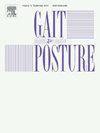卒中相关因素与门诊卒中幸存者步态不对称相关:系统回顾和荟萃分析
IF 2.2
3区 医学
Q3 NEUROSCIENCES
引用次数: 0
摘要
中风后,跛行和非跛行肢体之间的步态不对称是常见的,其特征是空间(如步长)和时间(如摆动时间)的差异。尽管对步态不对称的研究越来越多,但其与中风相关因素的关系仍不清楚。本系统综述和荟萃分析旨在调查这些关联,并为脑卒中后康复提供见解。方法综合检索PubMed、MEDLINE、CINAHL和Scopus,确定2000年1月至2024年6月间发表的观察性研究。研究考察了卒中相关因素与卒中后步态不对称之间的关系。对数据充足的因素进行meta分析,提取相关系数(r)来估计效应大小。结果14项研究符合纳入标准,8项研究(n = 468名受试者)纳入meta分析。颞叶不对称与下肢运动和感觉缺陷显著相关(r = −0.73;95 % CI:−0.88 ~−0.57;P <; 0.01),腿部力量(r = −0.50;95 % CI:−0.64 ~−0.36;P <; 0.01),痉挛(r = 0.51;95 % ci: 0.31-0.72;P <; 0.01),整体运动性能(r = −0.68;95 % CI:−0.74 ~−0.61;p & lt; 0.01)。空间不对称与腿部力量显著相关(r = −0.31;95 % CI:−0.45 ~−0.17;P <; 0.01),痉挛(r = 0.67;95 % ci: 0.49-0.85;P <; 0.01),整体下肢损伤(r = - 0.44;95 % CI:−0.64 ~−0.23;p & lt; 0.01)。下肢运动和感觉缺陷,以及整体运动表现,是与颞叶不对称最密切相关的因素。痉挛和/或挛缩是与空间不对称最密切相关的因素。这些发现强调了在卒中后康复中单独评估和处理步态不对称的必要性。本文章由计算机程序翻译,如有差异,请以英文原文为准。
Stroke-related factors associated with gait asymmetry in ambulatory stroke survivors: A systematic review and meta-analysis
Background
Gait asymmetry, characterized by spatial (e.g., step length) and temporal (e.g., swing time) differences between the paretic and non-paretic limbs, is common after stroke. Despite increasing research on gait asymmetry, its associations with stroke-related factors remain unclear.
Research question
This systematic review and meta-analysis aimed to investigate these associations and provide insights for post-stroke rehabilitation.
Methods
A comprehensive search of PubMed, MEDLINE, CINAHL, and Scopus identified observational studies published between January 2000 and June 2024. Studies examining the relationship between stroke-related factors and post-stroke gait asymmetry were included. Meta-analyses were performed on factors with sufficient data, extracting correlation coefficients (r) to estimate effect sizes.
Results
Fourteen studies met inclusion criteria, with eight studies (n = 468 participants) included in meta-analyses. Temporal asymmetry was significantly associated with lower limb motor and sensory deficits (r = −0.73; 95 % CI: −0.88 to −0.57; p < 0.01), leg strength (r = −0.50; 95 % CI: −0.64 to −0.36; p < 0.01), spasticity (r = 0.51; 95 % CI: 0.31–0.72; p < 0.01), and overall motor performance (r = −0.68; 95 % CI: −0.74 to −0.61; p < 0.01). Spatial asymmetry was significantly associated with leg strength (r = −0.31; 95 % CI: −0.45 to −0.17; p < 0.01), spasticity (r = 0.67; 95 % CI: 0.49–0.85; p < 0.01), and overall lower limb impairments (r = −0.44; 95 % CI: −0.64 to −0.23; p < 0.01).
Significance
Lower limb motor and sensory deficits, along with overall motor performance, were the factors most strongly associated with temporal asymmetry. Spasticity and/or contracture was the factor most strongly associated with spatial asymmetry. These findings highlight the need to assess and manage gait asymmetry separately in post-stroke rehabilitation.
求助全文
通过发布文献求助,成功后即可免费获取论文全文。
去求助
来源期刊

Gait & posture
医学-神经科学
CiteScore
4.70
自引率
12.50%
发文量
616
审稿时长
6 months
期刊介绍:
Gait & Posture is a vehicle for the publication of up-to-date basic and clinical research on all aspects of locomotion and balance.
The topics covered include: Techniques for the measurement of gait and posture, and the standardization of results presentation; Studies of normal and pathological gait; Treatment of gait and postural abnormalities; Biomechanical and theoretical approaches to gait and posture; Mathematical models of joint and muscle mechanics; Neurological and musculoskeletal function in gait and posture; The evolution of upright posture and bipedal locomotion; Adaptations of carrying loads, walking on uneven surfaces, climbing stairs etc; spinal biomechanics only if they are directly related to gait and/or posture and are of general interest to our readers; The effect of aging and development on gait and posture; Psychological and cultural aspects of gait; Patient education.
 求助内容:
求助内容: 应助结果提醒方式:
应助结果提醒方式:


